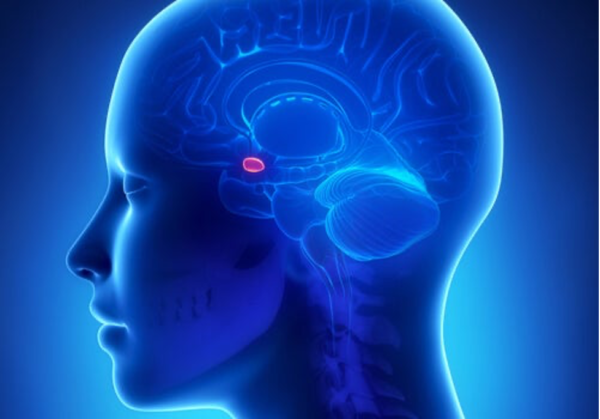(Exploring Your Mind) Aggression is a complex and heterogeneous construct. There are basically two types of aggression: premeditated (predatory instrumental) and impulsive (affective and reactive). This article describes the neurobiology of impulsive aggression.
Related How Does the Brain Process Fear?
by Staff Writer, December 11th, 2020
The author Stahl states that impulsive aggression may reflect “Emotional hypersensitivity and exaggerated threat perception. This may be linked to an imbalance between top-down cortical inhibitor controls and bottom-up limbic impulses”.
It seems that unrestricted impulsive aggression is generally highly active in the amygdala. However, it isn’t very active in the area of the orbitofrontal prefrontal cortex (OFC). But when a person tries to control their impulsive aggression, activity increases in the OFC. The question is, where, in the central nervous system, does aggressive behavior originate?
Hypothalamus and periaqueductal gray substance
During the first half of the twentieth-century, scientists conducted studies on cats. They particularly studied the region of the posterior hypothalamus. They discovered that destroying this region also “destroyed” aggressive rage behavior. Instead, a phenomenon known as sham rage, that doesn’t appear to be related to real anger, occurred. Sham rage isn’t actually directed towards the stimulus that triggered it. Actually, the stimulation of the posterior hypothalamus causes this behavior.
Studies that were conducted on the neurobiological basis of aggression in cats concluded that there are two types:
- An affective attack, characterized by emotional responses typical of the sympathetic nervous system.
- A predatory attack, without these emotional responses.

The affective attack
An extension of the medial hypothalamus controls this kind of attack. The medial hypothalamus extends to the trunk of the brain, where you find nerve centers. These nerve centers control how the attack is expressed. The cat might hiss or growl, for instance. An affective attack also involves:
- The medial amygdala. The hypothalamus receives excitatory information from it.
- The dorsal periaqueductal gray matter of the trunk of the brainstem. The hypothalamus sends it excitatory information. In addition, there are excitatory connections with the locus coeruleus and the solitary nucleus. These connections mediate autonomous responses during the affective attack.
The predatory attack
The brain controls this type of attack from the lateral hypothalamus. Regions of the brain trunk, such as the ventrolateral periaqueductal gray matter, amongst others, also play a role. In addition, the lateral hypothalamus receives excitatory information from the central and lateral amygdala. It also receives inhibitory information from the medial amygdala. In this investigation, the experts discovered that both circuits inhibit each other. Therefore, if a cat makes a predatory attack, it can’t, at the same time, make an affective attack.
Haller (2014) states that the mechanisms in the hypothalamus, periaqueductal gray matter, and other centers, such as the amygdala, can function similarly in humans. However, in humans, a psychological dimension is present and the prefrontal cortex is also involved.
The limbic structures (amygdala, hippocampal formation, septal area, prefrontal cortex, and cingulate gyrus) strongly modulate aggression. They do this via their connections to the medial and lateral hypothalamus.
The amygdala’s role in impulsive aggression
It seems clear that aggressive behavior involves the amygdala. For example, researchers conducted several studies of psychopathic individuals. These individuals had less gray amygdala substance. However, other studies contradict this. What does seem certain, though, is that the amygdala does play a part in aggression. But what isn’t clear is whether the amygdala increases or decreases in size when aggression occurs.
As for the activation of the amygdala, studies have been conducted with psychopaths. They demonstrate lower levels of activity in the amygdala when they look at violent images.

The prefrontal cortex in the neurobiology of impulsive aggression
What happens in the prefrontal cortex of violent individuals? Researchers conducted a PTE study with predatory (psychopathic) and impulsive murderers and neurologically and behaviorally normal individuals. They got the following results concerning the type of aggression and the activity of the prefrontal cortex.
Impulsive killers had less prefrontal activity. However, they had increased subcortical activity in the temporal lobe (containing the amygdala) compared to the control group subjects.
Predatory killers had prefrontal activity similar to that of the control subjects but they had excessive subcortical activity.
As a minimum, it seems that violence causes strange functional activity in the prefrontal cortex.
Studies on the neurobiology of aggression do suggest subcortical structures like the amygdala and other cortical structures are responsible for aggressive behavior. However, the studies aren’t conclusive. But they do tend to suggest that dysfunction in cortical and subcortical activity causes violent behavior.
Stillness in the Storm Editor: Why did we post this?
The news is important to all people because it is where we come to know new things about the world, which leads to the development of more life goals that lead to life wisdom. The news also serves as a social connection tool, as we tend to relate to those who know about and believe the things we do. With the power of an open truth-seeking mind in hand, the individual can grow wise and the collective can prosper.
– Justin
Not sure how to make sense of this? Want to learn how to discern like a pro? Read this essential guide to discernment, analysis of claims, and understanding the truth in a world of deception: 4 Key Steps of Discernment – Advanced Truth-Seeking Tools.
Stillness in the Storm Editor’s note: Did you find a spelling error or grammatical mistake? Send an email to [email protected], with the error and suggested correction, along with the headline and url. Do you think this article needs an update? Or do you just have some feedback? Send us an email at [email protected]. Thank you for reading.
Source:
https://exploringyourmind.com/impulsive-aggression-a-neurobiological-explanation/


Leave a Reply